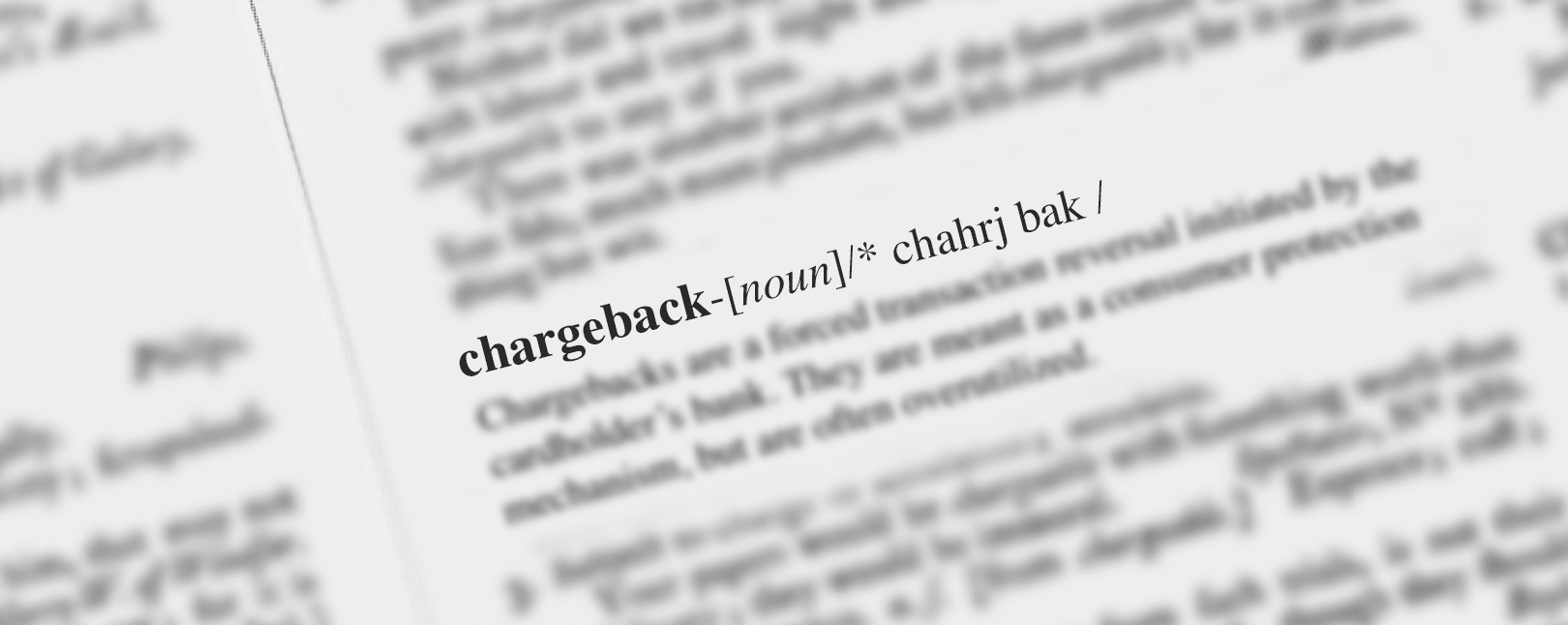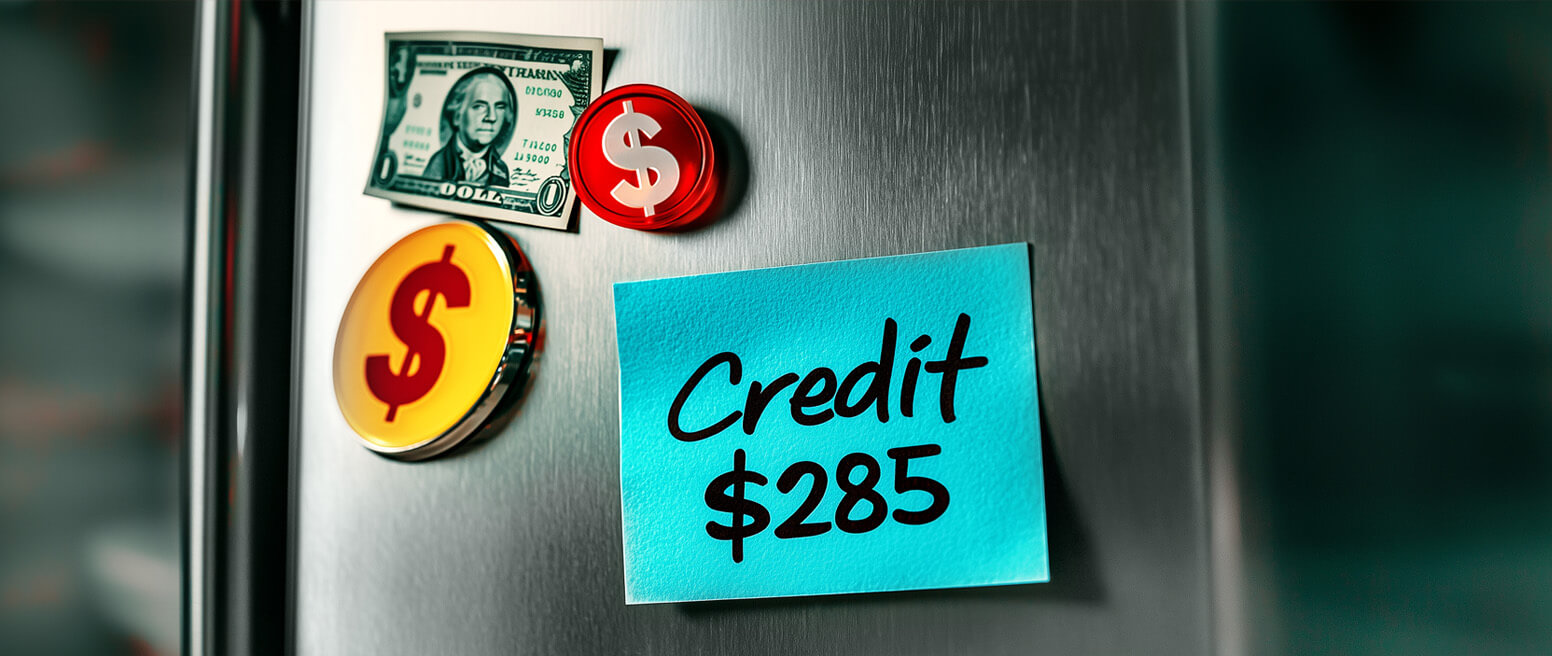Chargeback Definition: What Exactly is a Chargeback?
It’s not hard to come up with a simple chargeback definition: a chargeback is a forced payment reversal carried out at the bank level. There’s a lot of nuance and the gray area between the lines which a simple, one-sentence description doesn’t cover, though.
The truth is that the chargeback process is a lot more complicated than this definition suggests. That raises the question: what exactly is a chargeback?
What is a Chargeback?
- Chargeback
Chargebacks are a forced transaction reversal initiated by the cardholder’s bank. They are meant as a consumer protection mechanism, but are often overutilized.
[noun]/* chahrj bak /
As we mentioned above, the term “chargeback” refers to a process that allows issuing banks to reverse card payments made to merchants.
Let’s assume that a cardholder finds a transaction on her card statement that she didn’t authorize. Or, maybe the buyer made a purchase, but the goods or services provided didn’t live up to expectations. In either of these cases, the cardholder would be allowed to contact the bank that issued the card used in the transaction, and request her money back.
This chargeback process was first introduced in the 1970s as a consumer protection mechanism. The Fair Credit Billing Act of 1974 stipulated that card brands must have a method to help consumers recover their funds in case of fraud or abuse, but didn’t offer much guidance on how to do so. In response, card networks like Visa and Mastercard developed their own chargeback rules and procedures to protect consumers.
[Tweet "Many cardholders to believe that refunds and chargebacks are basically interchangeable. But, while it’s true that buyers get their money back in either case, a chargeback is very different from a typical return."]In those early days, the chargeback process was meant to help instill consumer confidence in the newly-introduced credit cards that were just beginning to find their way into consumers’ wallets. The idea was to protect cardholders who fall victim to criminal fraud or merchant abuse, and who can’t resolve the situation directly with the merchant. In a worst-case scenario, cardholders would have a fallback option to recover their money.
To the consumer’s eye, a chargeback is a lot like a refund. This perception leads many cardholders to believe that the two processes are basically interchangeable. It’s true that buyers get their money back in either case. However, the particulars of the chargeback definition make one thing clear: in the question of chargeback vs. refund, the two processes are very different.
How Much Are Chargebacks Costing You?
Get a free chargeback analysis and learn how much you could save.

How Chargebacks Hurt Businesses
Chargebacks are no small concern for merchants. Over time, they could literally destroy a business:
- The merchant is hit with a fee (ranging from $20 to $100) for every chargeback filed against the business. Even if the consumer later cancels the chargeback, the merchant still pays fees and administrative costs associated with the process.
- When consumers file chargebacks, they’re unlikely to return the merchandise involved. This means the merchant loses their up-front investment in the merchandise, plus any revenue and future potential for profit from reselling it.
- Ancillaries paid by the merchant, such as shipping costs and transaction processing fees, are not refunded after a chargeback. The merchant loses these costs on top of the cost of the merchandise mentioned above.
- If monthly chargeback rates exceed a predetermined chargeback threshold, the card network could impose punishing fines against the business. These fines may grow the longer the merchant remains noncompliant.
- If the merchant’s chargeback rate remains above the acceptable threshold, the merchant’s acquiring bank could simply terminate their account. The business’s funds would be frozen, and they would be unable to accept card payments.
- If an acquirer terminates a merchant’s account due to chargebacks, that business is also added to the MATCH list. This means the business has been blacklisted and could be unable to secure a new account with a different processor for at least five years.
So, as we can see, chargebacks can be a life-or-death matter for merchants. Even worse, the process is mostly out of the merchant’s hands.
3 Sources of Chargebacks
If we look strictly at the chargeback definition, it doesn’t seem like this process should be a problem for legitimate merchants. Unfortunately, chargebacks can be abused by cardholders, and that’s where we run into trouble.
Visa, for example, has roughly two dozen chargeback reason codes; a code is assigned to each case based on whatever reason a cardholder gives for disputing a transaction. A few of the more commonly-used reason codes include:
- 10.1: EMV Liability Shift Counterfeit Fraud
- 13.1: Merchandise / Services Not Received
- 13.2: Canceled Recurring Transaction
- 13.3: Not as Described or Defective Merchandise / Services
- 13.6: Credit Not Processed
Other card brands have their own codes that cover the same basic situations. Reason codes can be a useful indicator to help merchants understand a chargeback, but they don’t tell the full story. Despite all the available reason codes, all chargebacks can actually be traced to one of three fundamental sources:
Why Do Cardholders Commit Friendly Fraud?
In a case of a merchant error or criminal fraud, the customer would be entitled to demand a payment reversal in accordance with the definition of a chargeback we discussed earlier. Unfortunately, most chargebacks we see nowadays actually result from friendly fraud. The chargeback definition suggests that the process is meant to be used to prevent abuse, but it often becomes a tool to commit fraud, rather than prevent it.
There are numerous reasons why a cardholder could commit friendly fraud, such as:
- The consumer wants to return an item but not pay restocking or handling fees.
- The consumer experiences buyer’s remorse.
- The merchant’s return process seems too cumbersome.
- The consumer didn’t understand the delivery schedule or wasn’t patient enough to wait.
- The consumer didn’t act promptly and the return time limit has expired.
- A family member made the purchase but the cardholder doesn’t want to pay the bill.
- The cardholder forgot about or didn’t recognize the transaction.
- The cardholder wants to make some extra money and/or get something for free.
In effect, friendly fraud covers any situation in which a customer files a chargeback that is not in line with the spirit of the chargeback’s definition as a consumer protection tool. This abuse can be deliberate, or it can be unintentional, but in either case, the end result is the same: the merchant loses revenue and merchandise and must pay additional fees and overhead costs. Over time, the merchant could also see an elevated chargeback ratio, which could put their entire business in danger.
[Tweet "Despite all the available reason codes, all chargebacks can actually be traced to one of three fundamental sources: merchant error, criminal fraud, and friendly fraud."]
Can Merchants Prevent Chargebacks?
The reason codes published by each card network layout sets specific criteria for a cardholder to request a dispute based on the chargeback definition. Any dispute that’s not in line with those criteria is invalid.
To overturn a dispute, the merchant must be able to demonstrate that a chargeback was invalid by assembling compelling evidence and submitting it as part of the representment process. Sadly, this is a complex, time-consuming procedure, and there’s no guarantee of success. That’s why the best approach is to try preventing chargebacks whenever possible.
Prevent Criminal Fraud Chargebacks
Merchants can best prevent criminal fraud chargebacks by adopting a comprehensive, multilayer strategy for fraud management. This should incorporate a number of tools including (but not limited to):
- CVV verification
- Address verification (AVS)
- Geolocation
- 3-D Secure 2.0 technology
- Velocity checks
- Fraud blacklists
- Biometrics (when applicable)
With fraud scoring technology, merchants can gauge the amount of risk posed by each transaction. They can subject riskier transactions to manual reviews, or just automatically reject the sale.
Prevent Merchant Error Chargebacks
The transaction chain is a complex process from start to finish. Any error or miscalculation throughout that process can result in a chargeback. Merchants can prevent this by conducting a complete diagnostic examination of their policies and procedures at every stage in the customer experience.
Chargebacks911® offers a comprehensive merchant compliance review with a 106-point checklist to help prevent merchant error chargebacks (click here to learn more).
What About Friendly Fraud?
As we discussed earlier, merchants can’t effectively prevent friendly fraud. These incidents have no reliable pre-transaction indicators, and only really become fraud at the moment that the customer requests a chargeback. This can be weeks—or even months—after the sale.
There are certain steps businesses can take, however. Disputing illegitimate chargebacks in tactical representment can help recover revenue upfront, and also lead to more accurate chargeback decisioning in the long term. Click here to learn more about tactical representments.
Take Action Now
Chargebacks are an important and necessary consumer protection mechanism. The way they’re abused and misrepresented, though, is currently costing merchants billions of dollars every year.
Regardless of what the chargeback definition says, the majority of disputes are not valid. However, if you’re a merchant struggling with chargebacks, there is hope. Contact Chargebacks911 today and learn how you can put a stop to chargeback losses, recover revenue, and safeguard your business.











